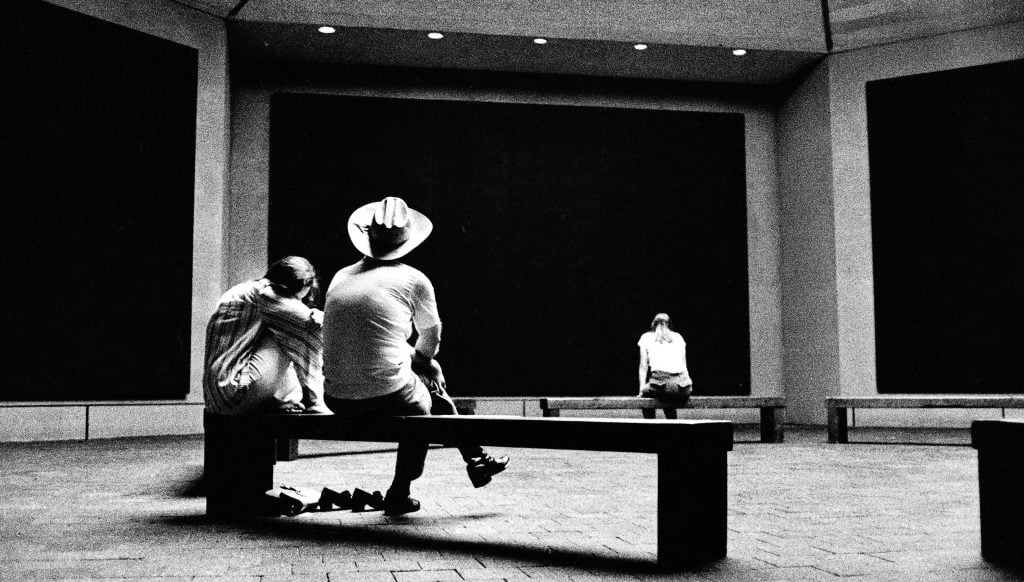The Rothko Chapel, a non-denominational sanctuary in Houston, Texas, that features 14 murals by renowned Abstract Expressionist painter Mark Rothko, sustained extensive damage in last month’s Hurricane Beryl, and will remain closed indefinitely.
Heavy rain and gale-force winds caused leakage to come through the roof of the structure. Part of the ceiling and several walls sustained water damage, and three of the paintings themselves were affected. The extent of the damage, and the cost of repairs, are still being determined. Houston’s Whitten & Proctor Fine Art Conservation will lead the conservation analysis and assessment. Previously scheduled programs may take place at alternate venues; details are forthcoming.
“We are deeply saddened by the impact of the hurricane on the Chapel and across Houston,” said executive director David Leslie. “The Chapel’s continued stewardship of this beloved cultural and sacred site, renowned for its Mark Rothko panels, remains our highest priority, and the closure will ensure that the necessary repairs and restorations can be made as effectively and completely as required. Our focus now is on the restoration of the building and panels, and on continuing our mission of both contemplation and action at the intersection of art, spirituality, and human rights.”
Beryl became the earliest-ever Category 5 storm in the Atlantic basin, forming as early as July 1, according to the National Oceanic and Atmospheric Administration. The storm brought about catastrophic damage and about 50 fatalities.

Visitors at the Rothko Chapel, in Houston, Texas, 1977. Photo: Romano Cagnoni/Hulton Archive/Getty Images.
The Rothko Chapel was commissioned in 1964 by Dominique and John de Menil, philanthropists and art collectors, who founded the Menil Collection, which stands nearby. Philip Johnson was originally recruited to design the building until he clashed with Rothko; architects Howard Barnstone and Eugene Aubry were then brought on board to realize the artist’s plans. The final octagonal space is hung with 14 massive black paintings by Rothko, who did not live to see the chapel’s completion.
At its opening in 1971, Dominique remarked of the artist: “As he worked on the chapel, which was to be the greatest adventure of his life, his colors became darker and darker, as if he were bringing us to the threshold of transcendence, the mystery of the cosmos, the tragic mystery of our perishable condition.”
The chapel has received visits from luminaries such as Archbishop Desmond Tutu in 1986 and the Dalai Lama in 1991, and is home to the Óscar Romero Award, given annually since 1986 to grassroots human rights activists.
Follow Artnet News on Facebook:
Want to stay ahead of the art world? Subscribe to our newsletter to get the breaking news, eye-opening interviews, and incisive critical takes that drive the conversation forward.

